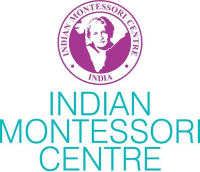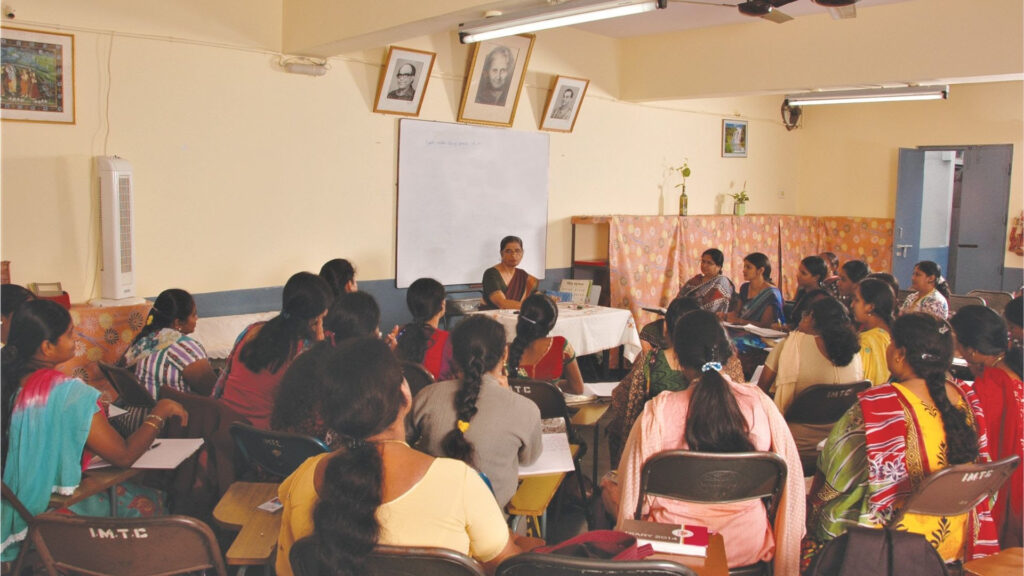Reflections!
How Montessori found me
Chandhrica Pagadal
Tenbroeck Academy, Bangalore.
I reached a saturation point just a few years into my corporate career. I felt like the job wasn’t adding any value to my life. I thought working with children would be a great way to feel good about the work I do, so I started working at a traditional school, being groomed by a mentor and learning on the job. I soon realised that I was not cut out for this role. At this point, a highly regarded Montessorian encouraged me to enroll in an Elementary Montessori Diploma course. This has easily been one of the best decisions I’ve made so far.

Training to become an Elementary Montessori teacher was like redoing six years of my primary schooling all over again in just a year. I made many stunning discoveries just like an elementary child and saw so many topics in a new light. From giving children the freedom of choice to make countless decisions throughout the day to learning about the world and its interconnectedness instead of splitting it up into various subjects are a few of the reasons why I admire the Montessori methodology.
I now understood why my growing years which should have been the best years of my life had been dreadful and long. It’s the same reason I didn’t enjoy working in a traditional setup.
Every being has a cosmic purpose and finding mine through following my varied passions has reignited a spark in my life.
Montessori At Home!
By Aishwarya Dwarakanath
Activity 1: Fine Motor Fun:
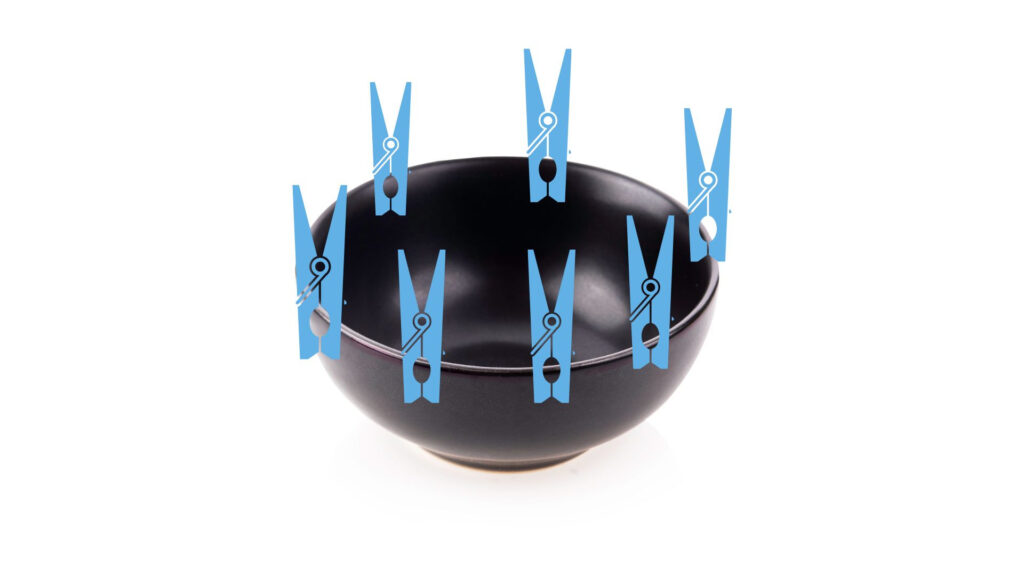
Activity 2: Land and Water forms:

You will need two trays and a large spoon for this activity. Grab some potter’s clay/plasticine- spread it out on the bottom of one tray. Now scoop out a hole in the middle and place the scooped-out part in the middle of the other empty tray. Now let your child pour water from a jug into the hole of the first tray. Say, “This is a lake. The land surrounds the water.” Let your child pour water into the second tray. The water flows around the plasticine. Now say- “This is an island. The water surrounds the land.” Pour the water back into the jug and let your child practice the activity.
Glossary of Montessori Terms
By Shakina
Control of error
Materials in the Montessori environment are designed to provide immediate feedback of the work done using them. It gives the child an opportunity to analyse, correct and learn from the material without the adult’s assistance. It gives the power to the hands of the children and enables self-motivation, self-learning, and boosts their self-esteem.
Cycle of Activity
Cycle of activity is a period of time where the children are engaged in an activity that has captured their interest, repeating it innumerable times until their inner need is satisfied without interruption or guidance from the guide. It enables the children to pursue their learning independently. The cycle of activity is visible in a Montessori House of Children during the Work cycle (2-3 hours in a day). The freedom to repeat helps the child concentrate which leads to normalisation and independence.
What's New on the Blog

If we think of the many things men have built in the world, of the enormous improvement that men have brought about in their environment, we may be led to believe that mankind’s mission in the cosmos is to transform nature. It has been said that man’s greatest delight is to possess things. No! Man’s greatest delight is using them! Using them to perfect himself and at the same time to improve his environment.
There is a constant interaction between the individual and his environment. The use of things shapes man, and man shapes things. This reciprocal shaping is a manifestation of man’s love for his surroundings. And this relationship is one of love. Love impels the child not toward the possession of an object, but toward the work he can do with it, and when work begins in a certain environment, association with one’s fellows also begins, for no one can work alone. Read More of this article by Dr Maria Montessori on IMC’s Blog
Library corner!
By Nivedita
Book 1: Mahabalipuram: The Ganga Comes to Tamil Nadu
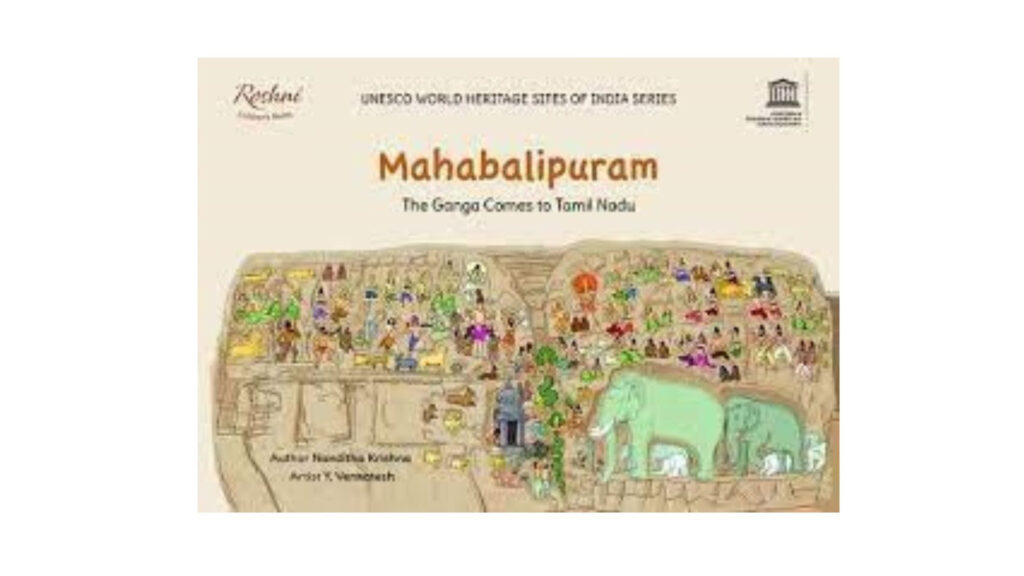
Named after an enormous carving in Mahabalipuram, written by Nanditha Krishna and illustrated by artist Y. Venkatesh, this book will be appreciated by both children and adults. The reader follows a group of children and their teacher as they travel down the Tamil Nadu coast. They stop at ‘Tiger Cave’ and wonder whether the animals carved here are lions or tigers. The author, gently informs the reader of the various purposes this monument might have served. Similarly at Mahabalipuram, the children, ably guided by their teacher, explore and discover the landscape, the carvings and monuments through their observations and their imagination. A delightful introduction to Tamil history through local monuments, this book is one among a series of books about the UNESCO World Heritage Sites of India.
Book 2: Trees Of Delhi: A Field Guide
by Pradip Krishen

A must for every school library and home! Don’t be fooled by the title, this book will help you identify trees in almost any Indian city. Starting with a section on the parts of a tree, there is a page dedicated to each tree with clear descriptions and detailed photographs of the tree, its bark, leaves, flower and fruit. Just like the dictionary has the letter of the alphabet printed on the edge of the page, this field guide has the shape of the leaf printed on the edge of every page for easy reference. There is also a section on habitats of various trees and tips on how to differentiate between similar-looking trees.
Art for the Heart!
By Subhashini
Make your own bookmark!
- woolen thread or satin ribbon
- A rectangle (7cm x 3 cm) cut out of chart paper or thick card stock paper
- Small strips of the same coloured paper
- Glue or sellotape to secure the ribbon
- Color pencils/markers

Steps
1. Take the rectangle paper/cardstock and glue and make any design on top of it
2. Glue the thread/satin ribbon on the back of the rectangle
3. Secure the glue with the small strip of paper so that the thread won’t fall off
4. Let the glue dry.
5. Your new bookmark is ready

Journey of a House of Children
Sarvvam school was established in 2010. The initiative to start a Montessori school which would nurture the child’s nature and bring out the true nature of the child began with the belief in nature itself!. Sarvvam is a child-centered environment as we always follow the children. We believe that a happy childhood makes an adult who can be happy and thrive in this world. Sarvvam always celebrates every little discovery, creative pursuit, and happy moment of the children. The House of Children is located in Coimbatore with three campuses.
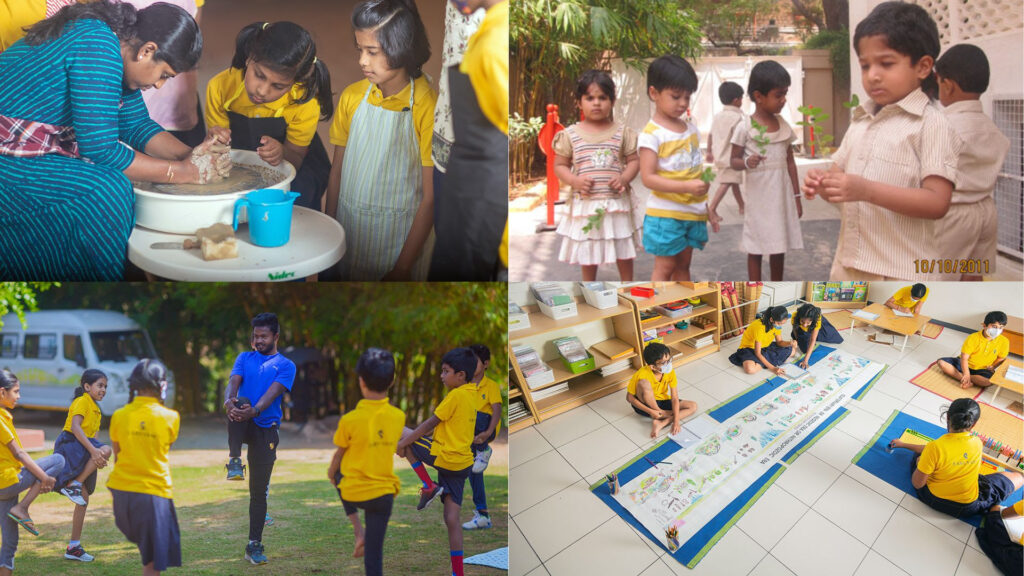
1. Casa At Racecourse- We strongly ensure that we provide a safe and secure environment for the little ones to provide opportunities to develop themselves physically, emotionally, and socially.
2. Fam school at Pichanur- This campus offers casa and elementary programs. We focus on creating a careful, enriching environment for the children to explore and experience nature.
3. Elementary and adolescence at Ganapathy- Sarvvam well understands the inner needs of the child and provides a wide opportunity to learn, experience, and explore together. The school offers adolescence program for children to learn to be independent, self-reliant, and critical thinkers. Adolescence children at Sarvvam plan, procure, execute, market, and maintain the accounts all by themselves in real time through which they are learning financial independence.
We believe that education should not constrain children’s thirst for exploring the world, which is why we offer horse riding, pottery, farming, cookery, crafts, arts, stitching, and other activities


